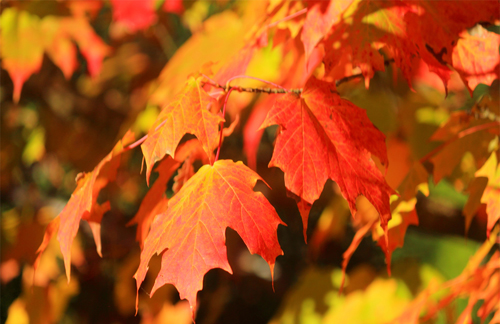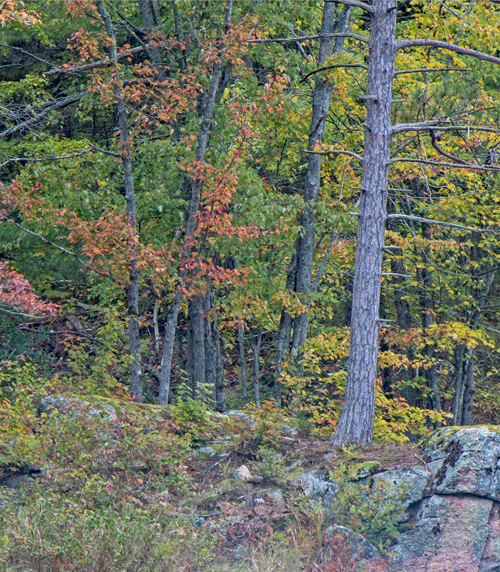Legacy Trail

Standing Tall
You are standing amid towering Sugar maple trees in one of Kawartha Highlands’ mature forests. Sugar maples — the national tree of Canada — are hardwood trees. That is, their wood is denser and heavier than their softwood counterparts, like pine, hemlock, or cedar. Growing 35 metres tall and living for over 200 years, Sugar maple rely on deep soils to anchor their roots in the ground. This allows these trees to defy gravity and stand up against strong winds. Prior to a period of intensive logging in the late 1800s and early 1900s, a mosaic of mature hardwood forests would have been widespread across Kawartha Highlands. Since logging ended in the mid-1900s, many of these forests have re-established themselves back into mature stands. Mature hardwood forests in Kawartha Highlands are arranged across the landscape in what resembles a puzzle. Each ‘puzzle piece’ connects with other unique habitats and ecosystems, such as mature mixed and coniferous forests, rock barrens, lakes, and wet

Prior to a period of intensive logging in the late 1800s and early 1900s, a mosaic of mature hardwood forests would have been widespread across Kawartha Highlands. Since logging ended in the mid-1900s, many of these forests have re-established themselves back into mature stands. Mature hardwood forests in Kawartha Highlands are arranged across the landscape in what resembles a puzzle. Each ‘puzzle piece’ connects with other unique habitats and ecosystems, such as mature mixed and coniferous forests, rock barrens, lakes, and wetlands. To understand why the ‘puzzle pieces’ are arranged the way they are requires us to look beneath our feet. The underlying geology of this area, for which Kawartha Highlands is aptly named, give way to a patchwork of exposed bedrock, shallow accumulations of delicate soil, and deep pockets of moist soil. These different soil types create unique habitat conditions that support a variety of mature forest types. Mature forests support a breadth of wildlife, from top predators such as Algonquin wolves and Black bears, to foragers like flying squirrels and salamanders.
© Kings Printer for Ontario, 2025